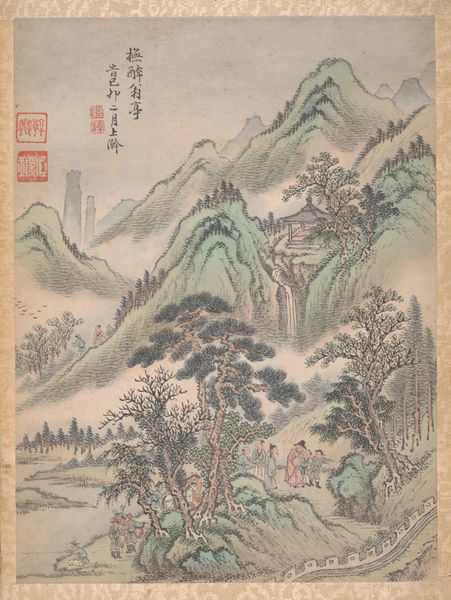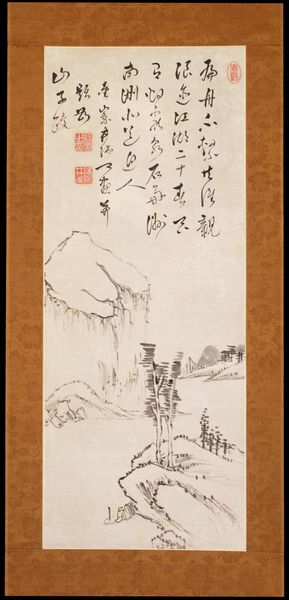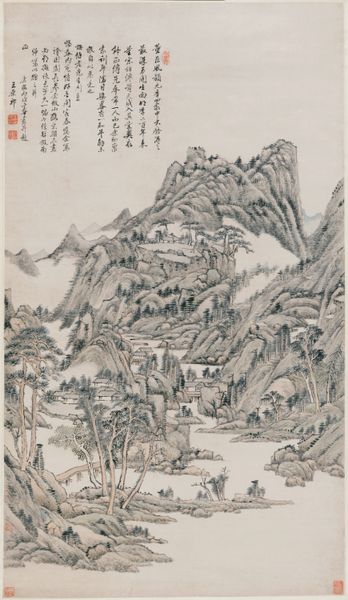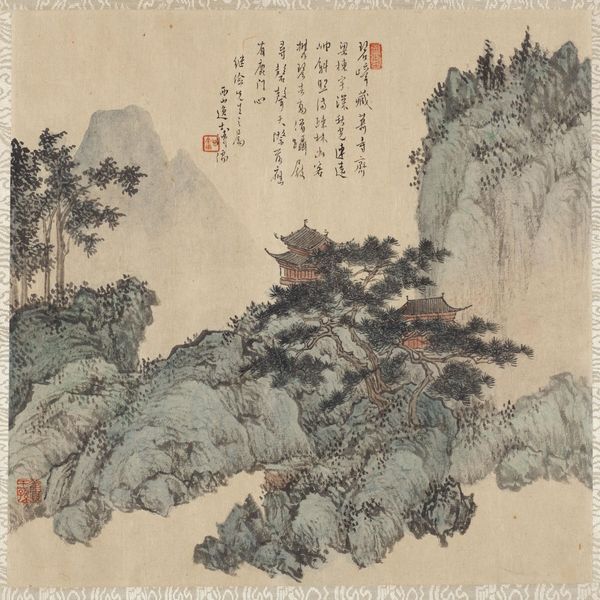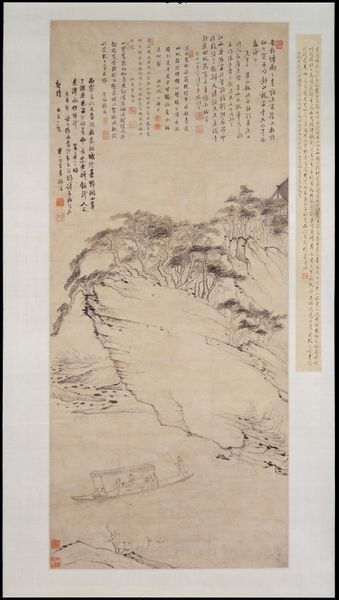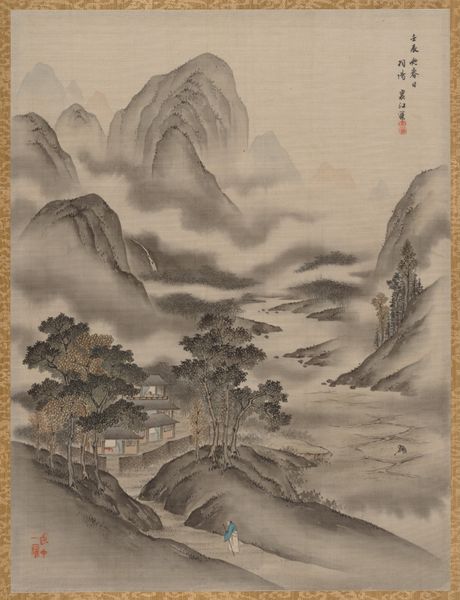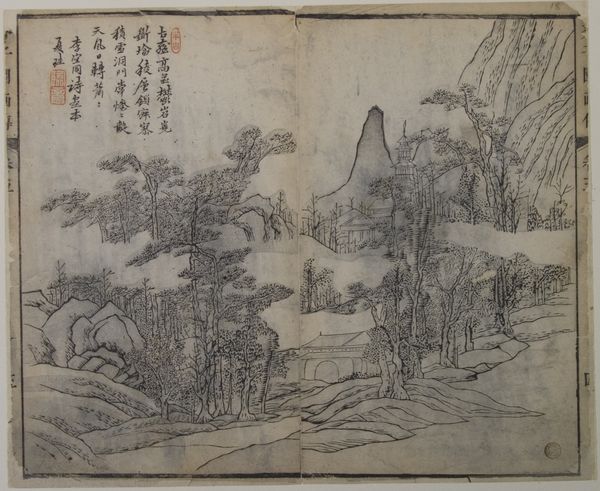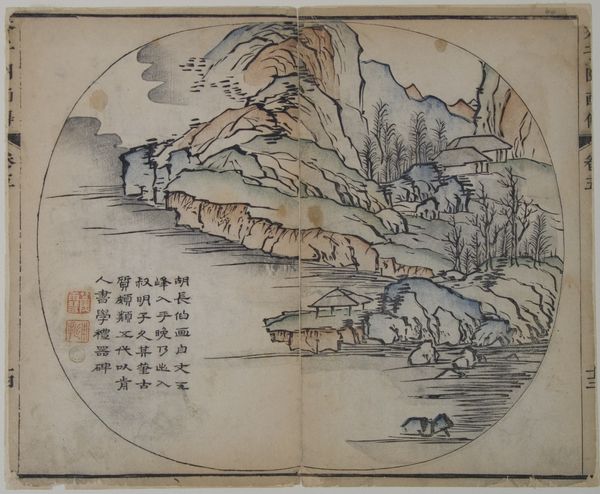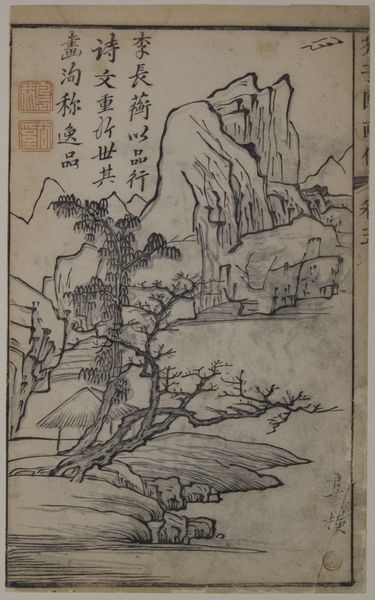
drawing, painting, watercolor, ink, pencil
#
drawing
#
water colours
#
ink painting
#
painting
#
asian-art
#
landscape
#
form
#
watercolor
#
ink
#
coloured pencil
#
geometric
#
mountain
#
pencil
#
line
Dimensions: Image: 19 13/16 x 13 13/16 in. (50.3 x 35.1 cm) Entire scroll: 58 5/8 x 19 in. (148.9 x 48.3 cm) Width including rollers: 21 in. (53.3 cm)
Copyright: Public Domain
Curator: Kenkō Shōkei's "Landscape with Pavilion," likely created between 1478 and 1480, employs ink and watercolors to create a scene imbued with a contemplative mood. It currently resides at the Metropolitan Museum of Art. What's your first impression? Editor: It feels like a faded dream, honestly. The muted colors and soft lines create this feeling of looking at a memory, or perhaps a world just out of reach. There's a stillness about it, like time is holding its breath. Curator: Precisely. Landscapes in East Asian art tradition aren't mere representations of terrain, but are vessels of philosophical thought, and in some ways, deeply related to escapism and spiritual pursuits. The pavilion itself, situated by the water, could symbolize a space for contemplation and withdrawal from the everyday world. Notice how deliberately it is set slightly apart? Editor: That little pavilion does seem important, a man-made sanctuary amidst this vast nature. I love the artist’s play with scale. The towering mountains in the background sort of dwarf everything else, emphasizing both the smallness of human existence and the potential for introspection. It really makes me think about how landscapes can mirror the landscapes of our minds. Curator: Consider also the symbolic weight of mountains in Chinese culture, representing the connection between heaven and earth, stability, and the dwelling place of immortals. Water signifies fluidity, change, and the subconscious. This pairing is central. The carefully applied lines and brushstrokes also evoke specific concepts tied to calligraphy as a high form of art, which invites repeated viewings to glean additional meanings from it. Editor: There is some beautiful text in the painting too; almost like visual music flowing among the hills and the waters... The mountains, the pavilion, the script... all echoing and balancing each other out, leading your eye—and maybe your soul—on a peaceful journey. It really brings together something aesthetic, philosophical, and spiritual. Curator: I agree entirely. The painting allows us to engage in introspection. Editor: I feel a greater understanding now of how deeply interconnected humans and nature really are, at least from Kenkō Shōkei’s point of view. Curator: It is about seeking harmony between humans and the environment we exist in.
Comments
No comments
Be the first to comment and join the conversation on the ultimate creative platform.
